A series of posters which celebrates six of the best Art Deco buildings in the United States; and this article — which was written for HomeAdvisor — gives more details about them.
I have been given express written permission to use the images and the verbatim text from the aforementioned article in this article. With articles such as this one, I sometimes add brief notes — but I am not knowledgeable enough about them to add much value to the information which is already here.
Six Examples of Art Deco Buildings in the United States
Art Deco was a glamorous European design style that grew out of the waning Art Nouveau movement in the first decades of the twentieth century. Manifesting through new trends in architecture and interior design, the movement perfectly captured the spirit of the age: hope, progress and jazz!
Naturally, when Art Deco made it across the Atlantic, Americans made the style their own. American Art Deco also appropriated elements of pre-Columbian, Aztec, and Mayan design. They escalated the style into the massive skyscrapers that were to become the nation’s signature as images of the roaring twenties introduced the rising superpower to the rest of the world.
1. Rego Park Jewish Center — Queens, New York
Built for a growing local Jewish population just after the Second World War, this synagogue is instantly recognizable from the outside by its colorful mosaic. This mosaic details scenes from the Old Testament, created by Hungarian-born artist A. Raymond Katz. Inside, three tall windows blend Hebrew calligraphy with the abstract colors and shapes for which Art Deco is known — a meeting of cultures across time.
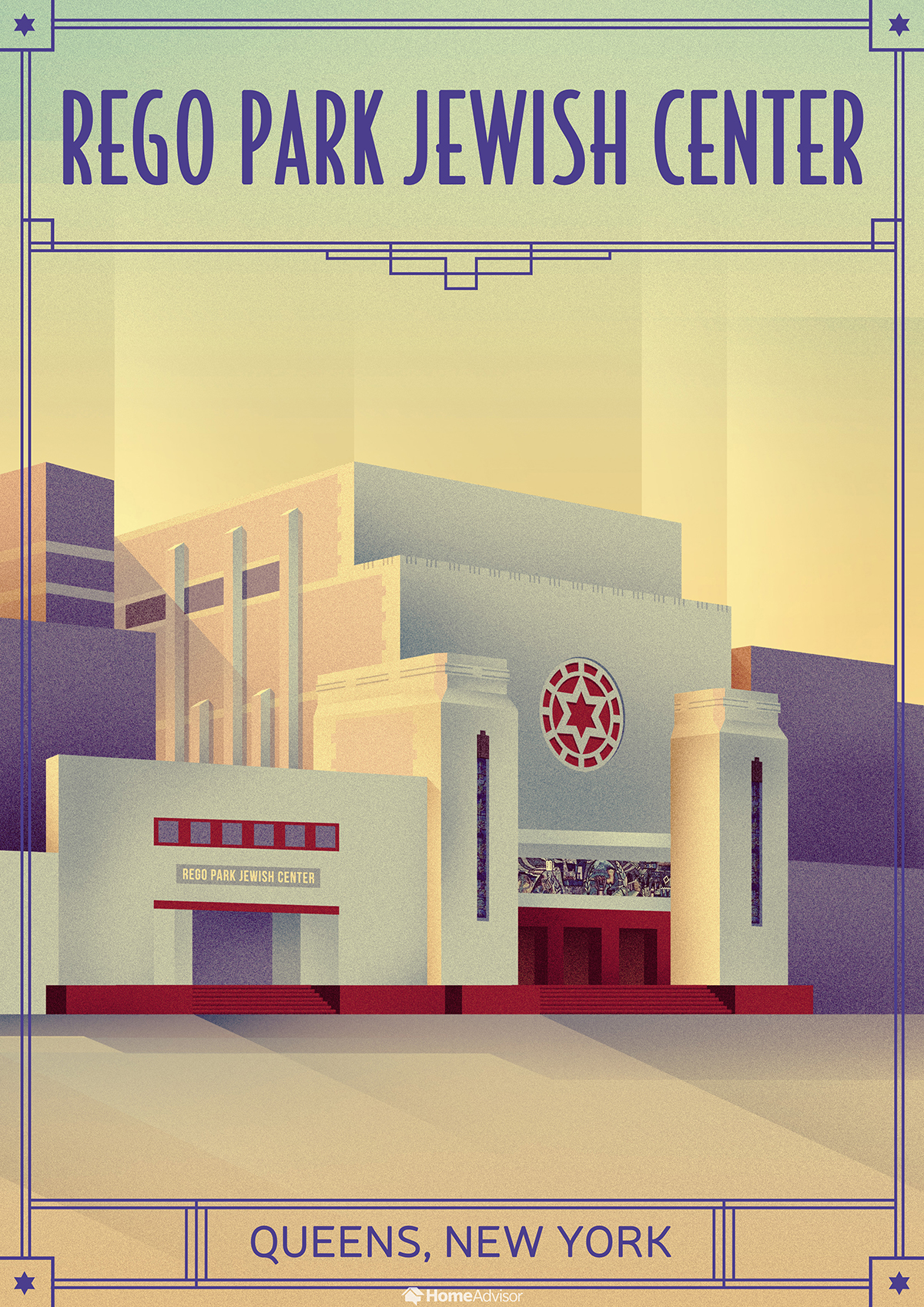
2. Civic Opera Building — Chicago, Illinois
The Civic Opera House is an early (1929) example of Art Deco. You can almost see the moment where the style takes over from Art Nouveau in the gilt cornices and Austrian crystal chandeliers of the foyer. The 45-story office tower flanked by two 22-story wings gives the building, from the outside, the appearance of a vast throne.
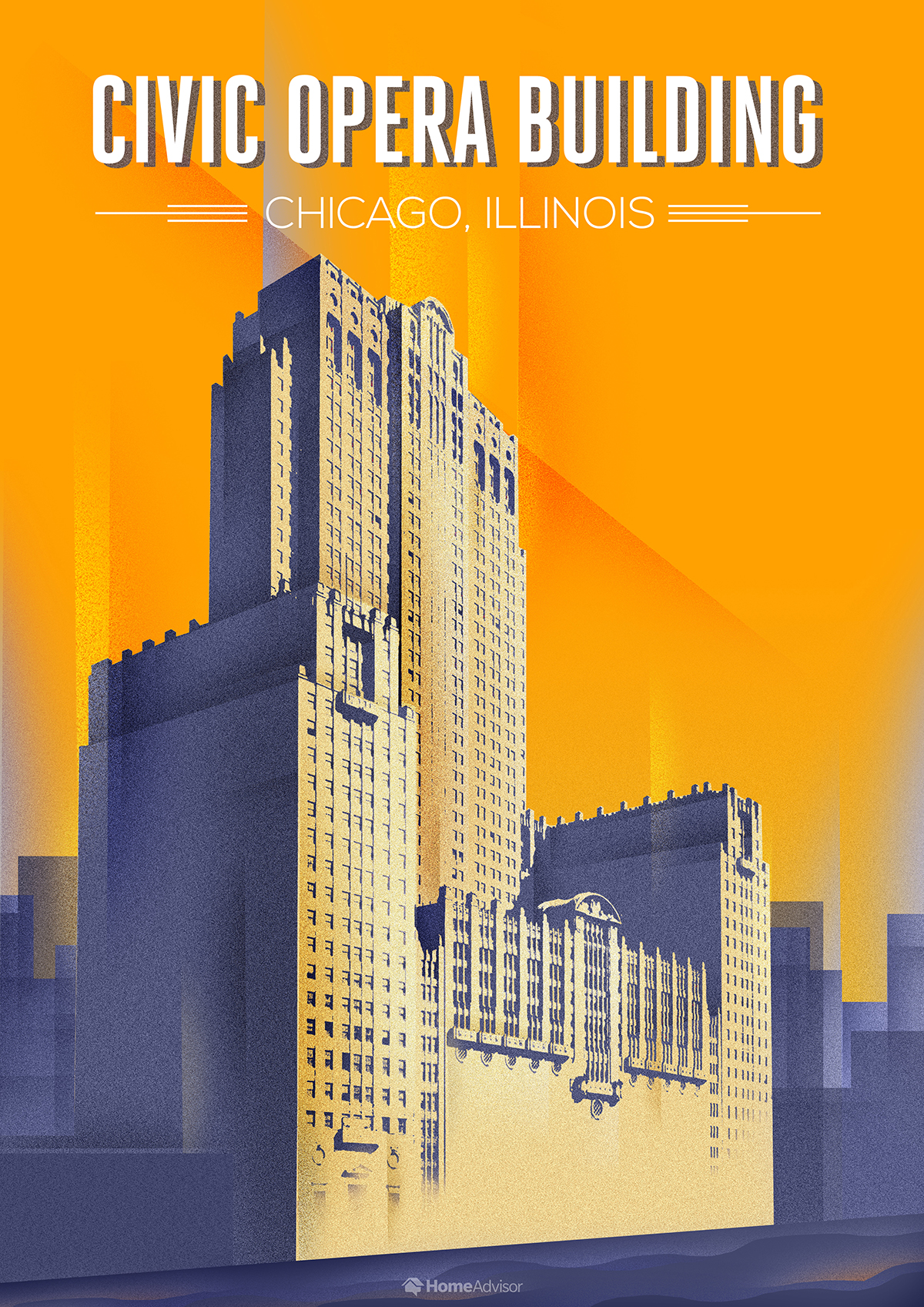
3. The Union Terminal — Cincinnati, Ohio
Sheltered by the largest half-dome in the western hemisphere, this monumental train station was built at a cost of $41 million and opened in 1933. Breathtaking mosaics by Winold Reiss commemorate 15 local businesses in intricate detail, providing relief to the classic geometrics of the arched roofs.
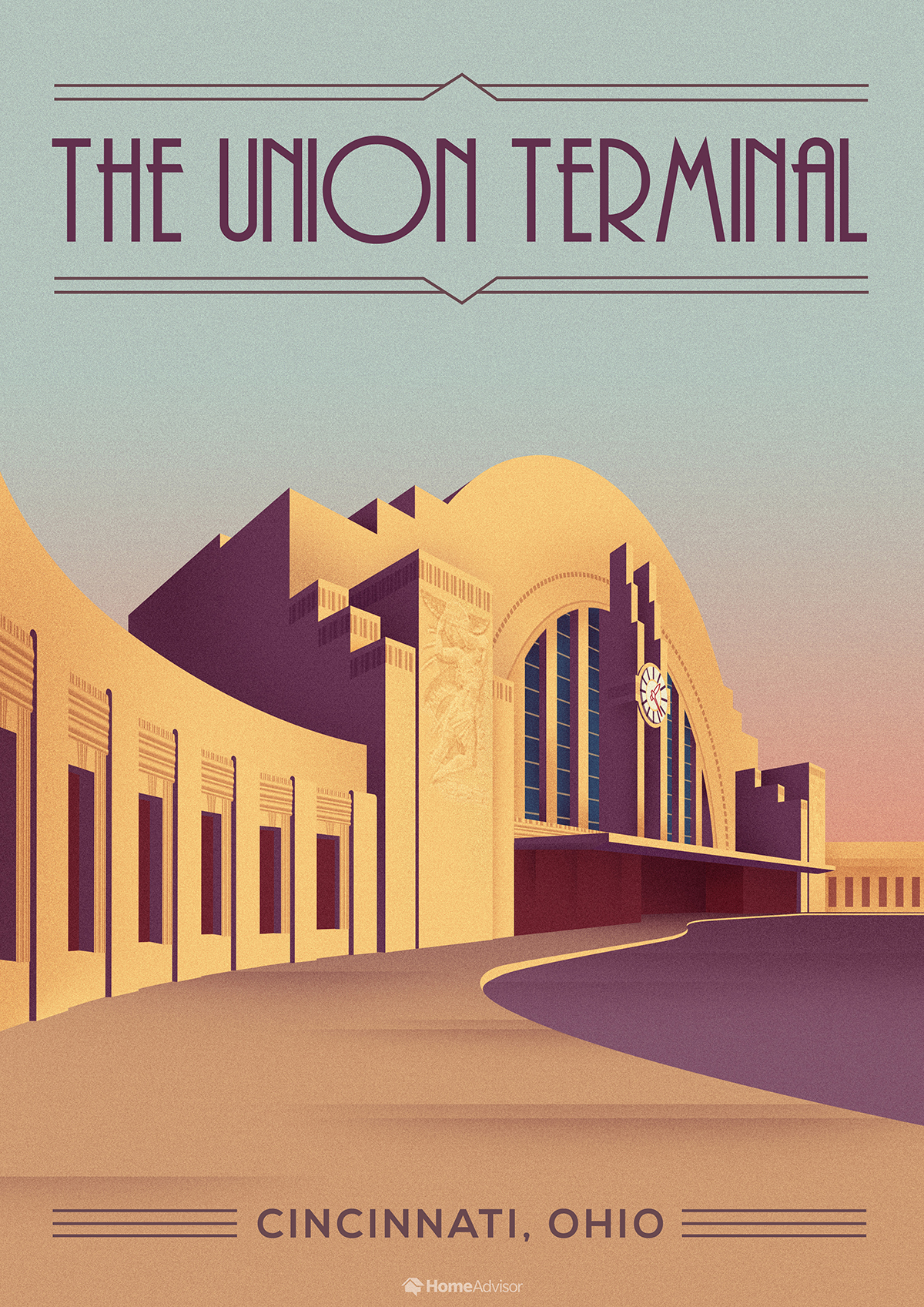
4. The U-Drop Inn — United States Highway 66, Shamrock, Texas
Midway along the iconic highway 66, the Tower Station and U-Drop Inn rose up from the desert in 1933 to provide food and gas to weary travelers. A shift in traffic patterns nearly saw the end of the building in the 1950s, but it stands strong today. LED strips replaced the neon ribbon and a Tesla charging station was added to power the travel-stop into the future.
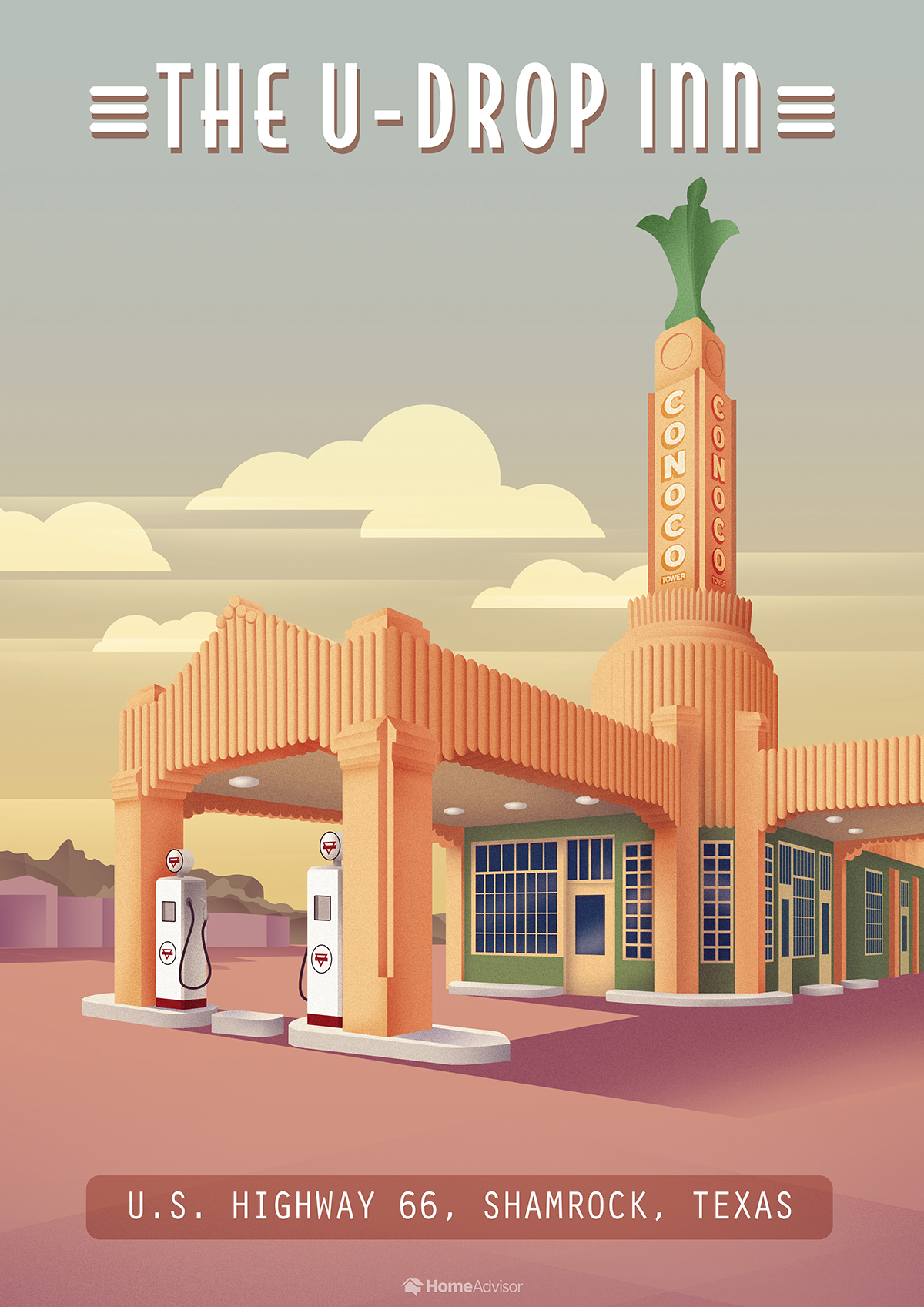
5. Paramount Theater — Oakland, California
The Paramount is a monument to collaborative creativity, unifying the efforts of a diverse team of artists into a consistent vision. Architect Timothy Pflueger is known for his iconic cinema designs, and the Paramount stands out as an Art Deco-flavored building that rejects all that came before it. It finds, instead, its own timeless style.
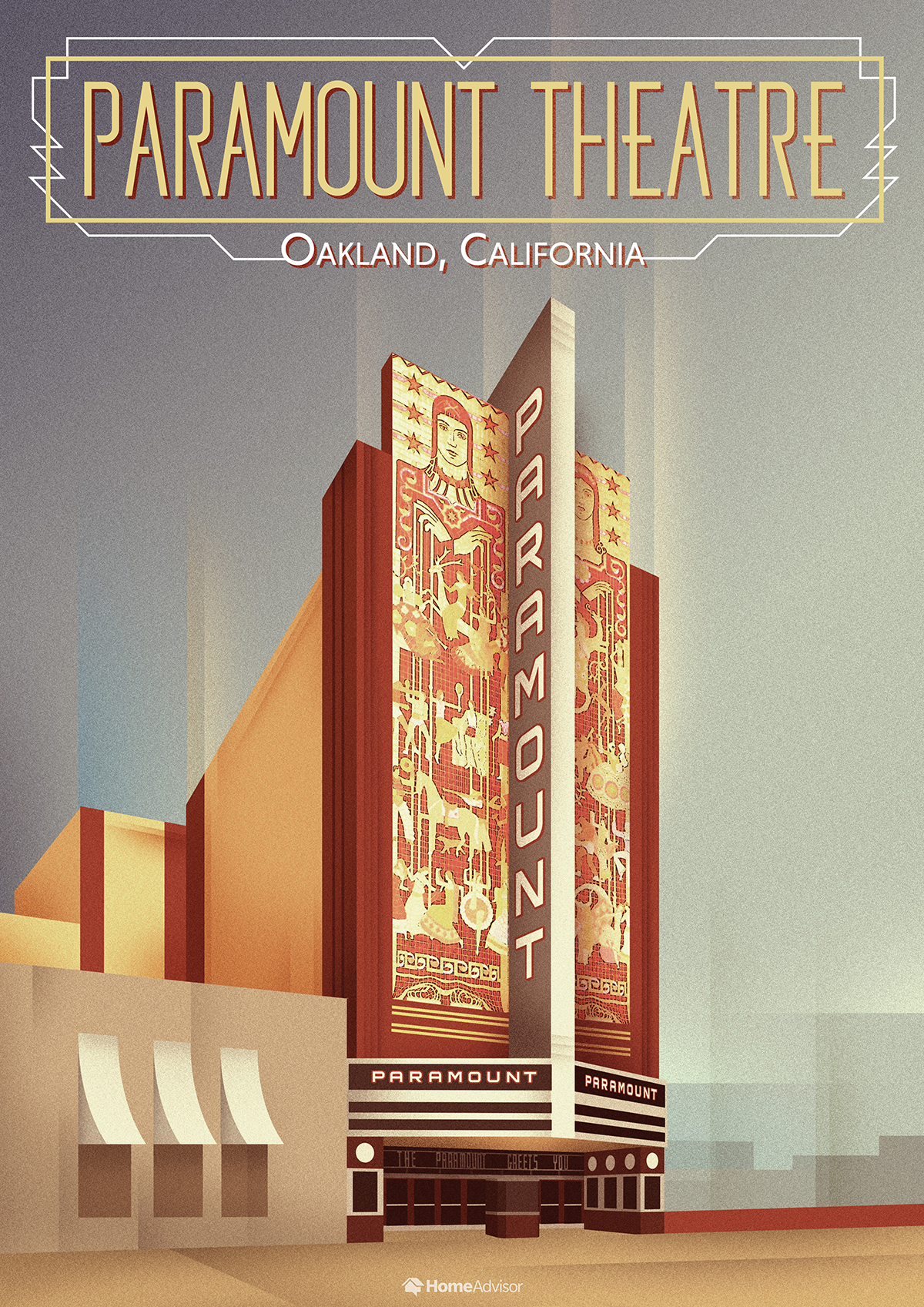
6. Hotel Breakwater South Beach — Miami, Florida
The ocean blue and flamingo pink of the Hotel Breakwater might seem like archetypal Art Deco colors, but the building wasn’t painted like this until the Miami Vice art department turned up in the 1980s. The ziggurat design and clean lines of the hotel are relatively modest, which is what makes it such a smart contrast for a district that is already rich with naturally-occurring forms and colors.
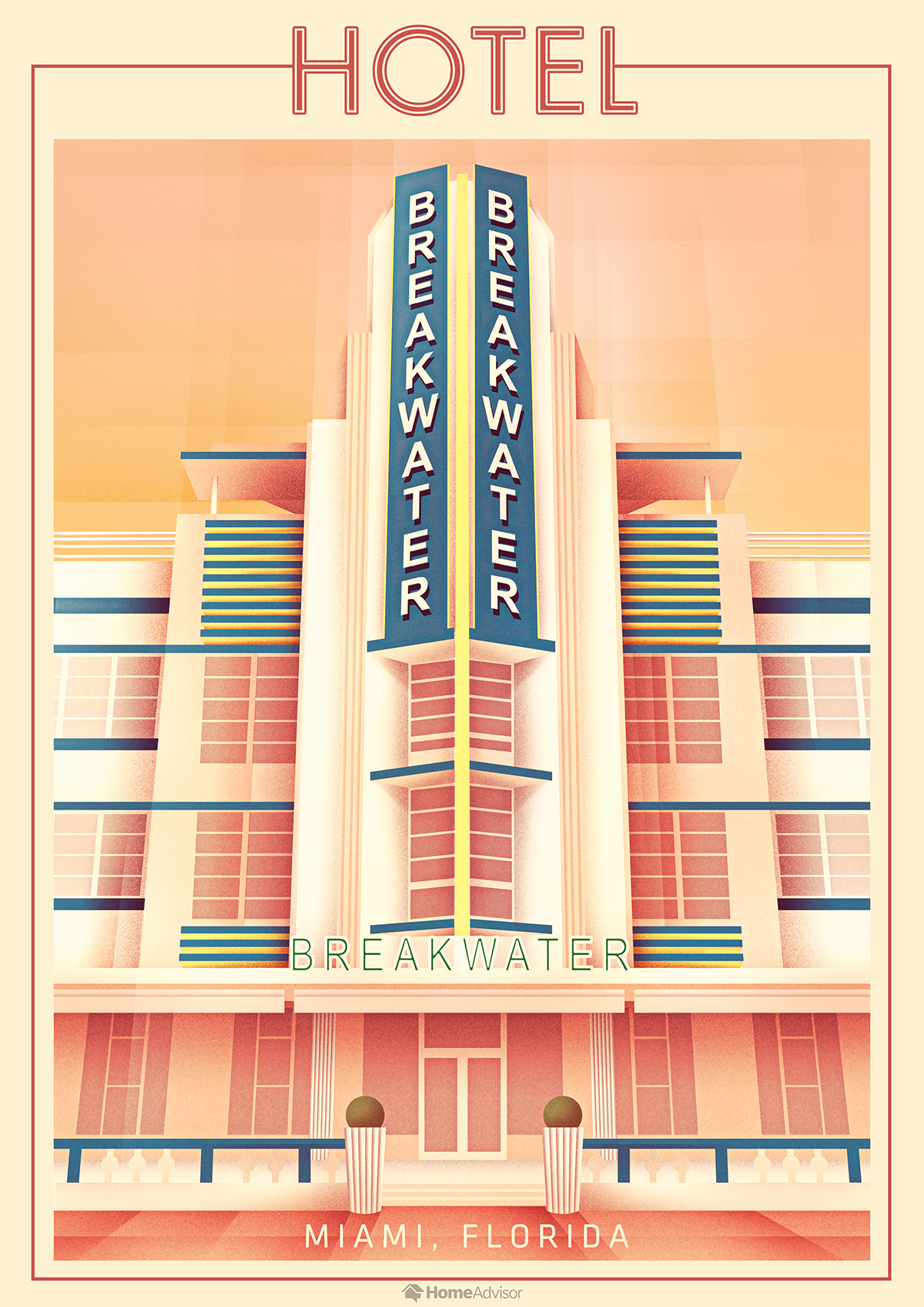
Summary
Art Deco — which is a shortened version of Arts Décoratifs from the International Exhibition of Modern Decorative and Industrial Arts, which occurred in Paris in 1925 — combined many different international styles with fine craftsmanship and rare and expensive materials to create what was then a uniquely modern aesthetic. Regardless of culture, examples of Art Deco appeared in many countries around the world in many forms: buildings, cars, art, jewelry, trains, and even everyday electronics and appliances as only some of many examples. It has become a classic representation of luxury, exuberance, glamour, and faith in social and technological progress from a bygone era — most notably, from the 1910s through the early 1940s.
Today, Art Deco is still a celebrated style which exudes its own identity — so much so that ongoing efforts to preserve classic examples of it continue to be ongoing. Thankfully, many of these classic buildings remain.
Despite the Chrysler Building in New York being one of the most famous and iconic examples of buildings in the Art Deco style in the United States, it did not place on the list in this article. Photograph ©2011 by Brian Cohen.

